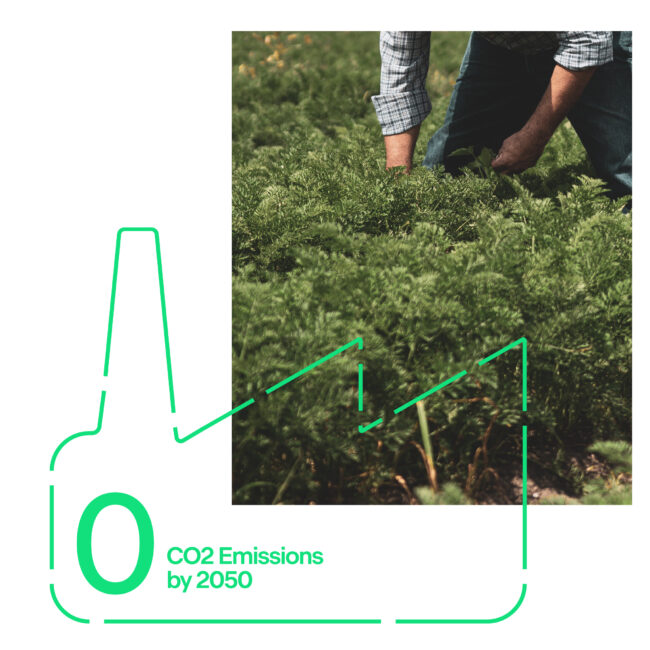
What is CHOICE
what we strive for
The Challenge
The Intergovernmental Panel on Climate Change (IPCC) has issued a stark warning: the planet must achieve zero emissions by 2050 to avoid dire climatic consequences.
Besides the supply-side mitigation actions, this ambitious goal necessitates “substantial demand-side mitigation” and significant behavioural and lifestyle changes, especially in major industries like Food and Agriculture, which are among the biggest contributors to global CO2 emissions.
Policymakers rely on Integrated Assessment Models (IAMs) for modelling climate stabilization pathways and take better informed decisions. Nevertheless, the mitigation options traditionally focused on IAMs are the supply-side measures, whereas less attention used to be paid to demand-side and food system representation, due to the inherent complexity and actor heterogeneity.
In response to the climate urgency, CHOICE strives to mainstream Integrated Assessment Models (IAMs) by embedding behavioural change and actor heterogeneity, and increasing their outreach to citizens, communities and industrial actors in the Food, Agriculture and Land Use sectors.
Leveraging distinct disciplines, technological and scientific advances, as well as large-scale awareness and engagement campaigns under an innovative framework, our goal is to enhance IAMs to play a pivotal role towards meeting the 2050 zero emissions goal.

our objectives
In mission of
O1:
Creating a new generation of climate change-aware citizens, communities and industry actors by mainstreaming IAMs’ outputs and embedding them into established applications and services related to food consumption, production and supply chain. Data storytelling, immersive technologies, gamification, social incentives and emotional appeals will also be exploited.
O2:
Improving the accuracy and policy-relevance of well recognised IAMs, by introducing and improving their representation of actor heterogeneity and behavioural aspects, both playing a crucial role in a realistic mapping of societal transitions.
O3:
Providing a concrete understanding for demonstrating how small to medium-scale actions at the local level related to the adoption of food-oriented demand-side measures may be upscaled to a global level, taking into consideration different socio-economic profiles and distributional and equity effects.
O4:
Improving the acceptance of IAMs to non-expert groups of stakeholders and decision-makers and fostering the open science approach of CHOICE and the capacity-building activities among different research teams.
O5:
Explore and quantify trade-offs from adopting the CHOICE proposed actions, including in the fields of biodiversity, health, and food security, towards achieving UN Sustainable Development Goals (SDGs).
Forge a chain of climate choices
Our way to success
CHOICE starts from a bottom-up analysis of individual consumers and actors in the food supply chain to understand their behavior and potential for change. The project will harness these insights to consistently feed into a new generation of IAM models that correctly reflect the underlying heterogeneity, accounting for multiple representative consumers and actors.
This improved representation of actor heterogeneity, combined with the ability to offer detailed land management results at resolutions as specific as NUTS2, will allow for tangible communication with individual consumers and local policymakers, as they will easily relate to climate mitigation pathways, translating the benefits of behavioral change and its urgency at familiar scales alongside the global impacts.
This approach will be supported by the large-scale adoption of CHOICE digital immersive tools, data storytelling and gamification, whose design is underpinned by notions of emotional appeals and social incentives.
Using these digital enablers, CHOICE will orchestrate large-scale engagement and ‘green marketing’ campaigns and demonstrations with a wide geographical and societal dispersity, spanning four continents, namely Europe, Africa, Latin America, and Asia, informing consistently the global IAM models, while focusing on Europe.
Then, through well-established methods from behavioral science and marketing domains (e.g. Randomised Controlled Trials, RCTs), CHOICE will promote specific interventions and consistently evaluate the reactions of a rich and diverse set of socio-economic profiles and stakeholder groups to these incentives.
Τhis process will be further facilitated through the intuitive and insightful interfaces designed for the CHOICE IAM models and their complementary accounting tools, strengthening their scenario-building capacity, improving the transparency of results, and ultimately enabling their broader integration into decision-making processes.
EXPECTED OUTCOMES
Project's pathways towards impact
02
Contributions to major international scientific assessments such as the reports of the Intergovernmental Panel on Climate Change (IPCC), the Intergovernmental Science-Policy Platform on Biodiversity and Ecosystem Services (IPBES) and the International Resource Panel (IRP).
03
Increased robustness, legitimacy, relevance, usability and transparency of IAMs leading to increased uptake and better awareness of their results across various end-user groups, developing, where possible, new business models for IAMs transparency (for example, open source and open code options).
04
Enhanced coherence between climate action (mitigation, understanding of impacts, climate risks and adaptation) and other environmental/sustainability objectives, notably biodiversity, based on a more realistic representation of their interactions, including co-benefits and trade-offs.
05
More active involvement of citizens in climate action based on better understanding and demonstration of how small-scale actions contribute to the achievement of large-scale climate policy objectives including through socially innovative approaches, and better understanding of which actions/policies are more effective.

